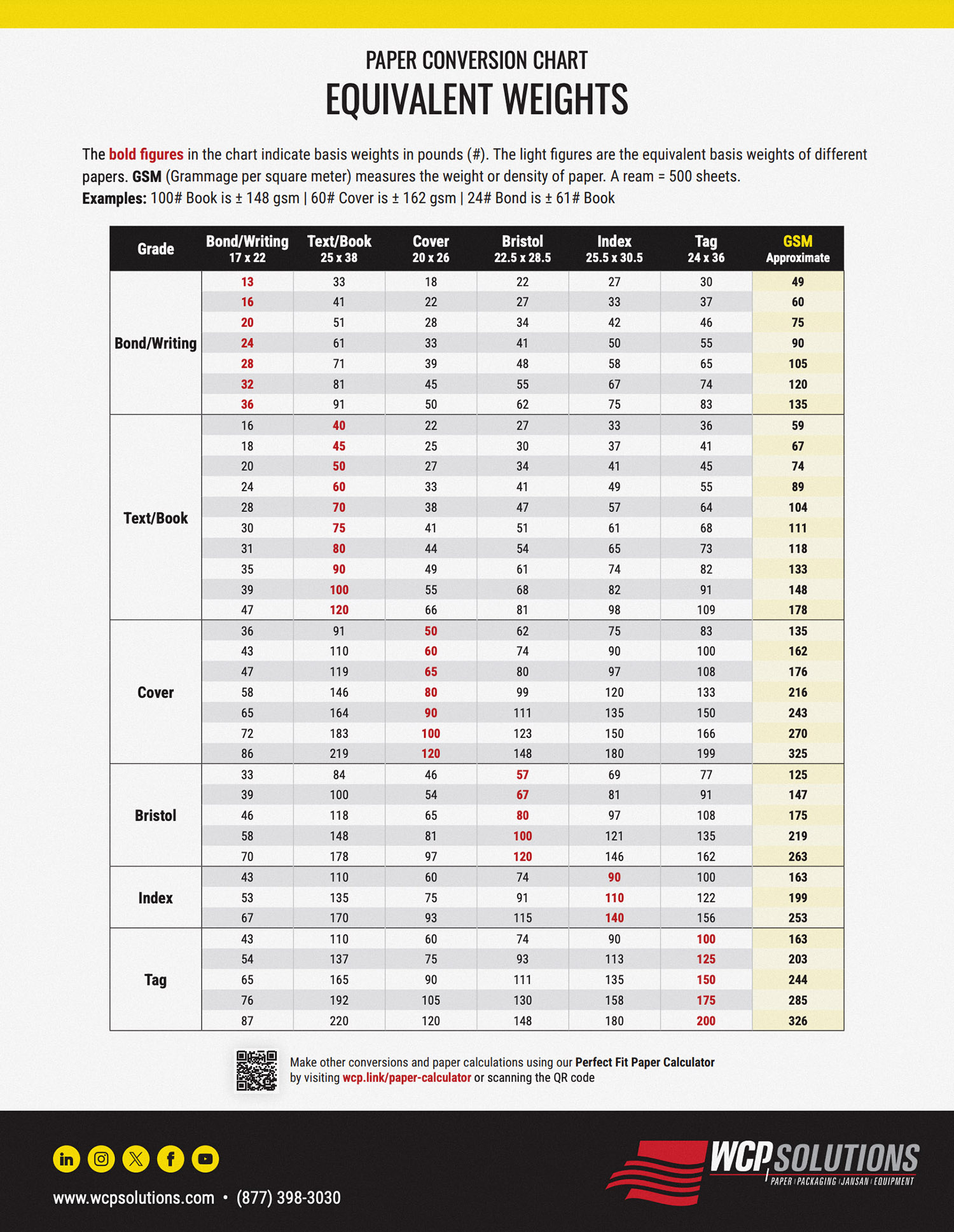Paper 101: Understanding Basis Weight, GSM and Why it Matters for Your Business

When it comes to choosing the right paper, one of the most important factors to consider is the basis weight. Whether you are in printing, packaging, or any other industry that relies on paper products, understanding basis weights can make a big difference in both performance and cost-effectiveness for your project. Materials with a higher basis weight typically cost more. By understanding the basis weight, printers, designers, and manufacturers can make better informed decisions on the sheet to use and help them find a balance between cost and performance on their project.
What is Basis Weight?
But what exactly is the basis weight of paper, and why is it so important? In simple terms, it refers to the weight of a ream of paper (500 sheets) measured in its basic sheet size. However, its impact goes beyond just weight—basis weight influences everything from durability and texture to how ink or finishes adhere to the paper.
What is a Basic Sheet Size?
A paper’s basic sheet size is the size of the paper before any sizing and trimmings are done. It refers to the standard dimensions of the sheet of paper used to determine its basis weight. The basic sheet size will vary for different types of paper. For example, text and book paper have a basic size of 25 x 38 inches versus cover paper, which has a basic size of 20 x 26 inches.
Understanding the basic size is critical because it will impact the calculated basis weight of the paper you are looking at. For example, an 80# book is very different in thickness from an 80# cover. When making these comparisons, printers and designers often compare sheets using GSM.
What is GSM?
GSM (grams per square meter) is a worldwide measurement of paper density. It involves measuring the weight of a square meter of paper. GSM is beneficial as it offers a straightforward method to compare the thickness or density of various papers, irrespective of their type, size, or basis weight.
What is a Paper Basis Weight Conversion Chart?
A conversion chart allows you to compare the basis weights across different types of paper to help you better understand how one grade relates to another. For example, 20# bond is comparable in thickness to 50# text paper. They both have an approximate GSM of 75. Using a conversion chart helps you make an apples-to-apples comparison of these two types of paper, allowing you to make smarter decisions when choosing a paper.
Download our Basis Weight Conversion Chart or visit our Paper Calculator for the GSM and other paper-related measurements.
Paper Grades and Their Basic Sheet Sizes:
A selection of common paper grades and their uses.
-
- Bond/Writing Paper: This is a common type of paper used for letterheads, business forms, and stationery. The basic sheet size is 17 x 22 inches.
- Text/Book Paper: Text paper is often used for books, brochures, and catalogs and has a basic size of 25 x 38 inches.
- Cover Paper: This heavier and more durable paper is typically used for covers of books, reports, and presentations. Its basic size is 20 x 26 inches.
- Bristol Paper: Known for its stiff, smooth surface, Bristol paper is used for greeting cards, postcards, and other applications requiring a thicker stock. The basic size is 22.5 x 28.5 inches.
- Index Paper: This type is used for index cards, file folders, and other products where stiffness is needed. The basic size is 25.5 x 30.5 inches.
- Tag Paper: Known for its durability and strength, it is often used for price tags, folders, and industrial applications. Its basic size is 24 x 36 inches.
Learn more
We can help you choose the right size, finish, and basis weight for your everyday or specialty printing needs. We also have resources, such as our Paper Calculator, that make calculating paper math easy, and our Sample Services to help you find the perfect sheet of paper. Contact your local WCP account manager or customer service team to learn more.


